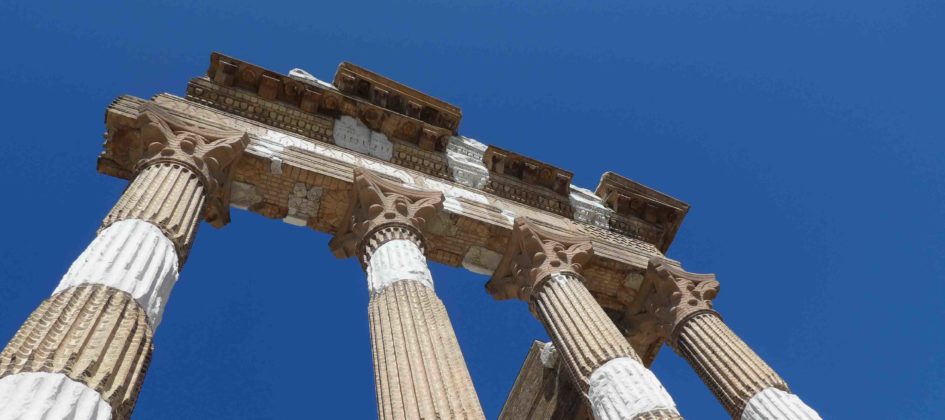 In 1535 in the northern Italian city of Brescia, Angela Merici founded ‘The Company of St Ursula’. This group of women would eventually become known as the Ursulines, an order of nuns whose vow to ‘educate girls’ took them to France, Germany, England and, ultimately, to Australia. I was educated by the Ursulines in Brisbane and the order’s Italian heritage sparked what became a long-held interest in Brescia.
In 1535 in the northern Italian city of Brescia, Angela Merici founded ‘The Company of St Ursula’. This group of women would eventually become known as the Ursulines, an order of nuns whose vow to ‘educate girls’ took them to France, Germany, England and, ultimately, to Australia. I was educated by the Ursulines in Brisbane and the order’s Italian heritage sparked what became a long-held interest in Brescia.
Almost 1500 years before Angela Merici and her group committed themselves to spreading Christian doctrine, the Romans in Brescia were busy constructing a monumental temple dedicated to the worship of their own gods.
 Completed in 73AD, the Capitolium of Brixia (as it was then known) comprised three individual chambers or temples. At the entrance, massive Corinthian columns formed part of a portico and supported a pediment dedicated to the Roman Emperor of the day. The Capitolium was an impressive structure and from its position near the top of a hill would have dominated the town.
Completed in 73AD, the Capitolium of Brixia (as it was then known) comprised three individual chambers or temples. At the entrance, massive Corinthian columns formed part of a portico and supported a pediment dedicated to the Roman Emperor of the day. The Capitolium was an impressive structure and from its position near the top of a hill would have dominated the town.
Centuries later, though, nature had reclaimed the site and by the 1820s all that remained visible was the very top of one of the columns. Finally a curious archaeologist initiated an excavation and the remarkable ruins and treasures of the Capitolium – and an adjoining amphitheatre and other buildings – were uncovered.
 Today the partially reconstructed ruins and a really excellent museum sit near the end of Via dei Musei in the centre of Brescia. A little further along the Monastery of Santa Giulia complex houses the city’s main museum and three historic churches including a series of breathtaking frescos.
Today the partially reconstructed ruins and a really excellent museum sit near the end of Via dei Musei in the centre of Brescia. A little further along the Monastery of Santa Giulia complex houses the city’s main museum and three historic churches including a series of breathtaking frescos.
Since our trip to Brescia we’ve been told that the city is considered by many to be an industrial centre and so is often overlooked as a destination. But we are delighted to have experienced this special city and are very grateful to those Ursuline nuns who, albeit unwittingly, led us there.

10/23/2017 at 10:13 am
Yep guilty. I didnt go to Brescia as well! Thanks for opening up more horizons Gayle. PS Do you know Sr Anne Dawson?
10/23/2017 at 1:56 pm
Hi Paul! I didn’t know her but I think she’s done some work with Sr Janice Howard who was one of our teachers. Good women!
10/10/2017 at 12:08 am
Oh. The history is everywhere. And that you have a connection to it Gayle makes it even more special. x